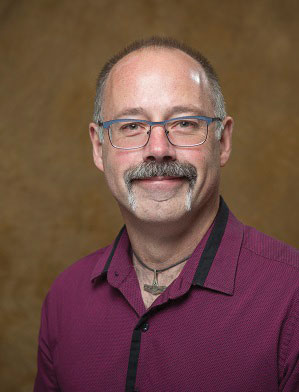EXPERT INSIGHT
BY JACK GATES • PHOTO COURTESY OF THE UNIVERSITY OF SASKATCHEWAN
If you thought being the new kid in school was a lot of pressure, try being the new research chair at a place of higher learning. With the support of industry groups, three agricultural chairs recently appointed by western educational institutions are tasked with prioritizing and planning research efforts. As they take a seat at the farm research table, they aim to contribute to the betterment of the Prairie grain industry.
Maryse Bourgault
A crop physiologist by training, Maryse Bourgault appreciates the value of research in terms of dollars and cents, but said it must also be relevant to farmers. It’s a perspective that will drive much of her activity as the first Western Grains Research Foundation (WGRF)-funded integrated agronomy research chair at the University of Saskatchewan, a position that includes a teaching component.
A major research focus for Bourgault is cropping systems and drought tolerance, including the aspect of deep rootedness and its relationship to yield. As well, she is driving the formation of an applied research program at the university.
“Applied agronomy research fell out of fashion, and I think it is something we must revive,” said Bourgault. “A lot of people are good at either field work or lab work, but if you’re [working in the lab] and you don’t know how to sample or have a grasp of what’s happening in the field, you can end up misinterpreting the data.”
In working to create a facility that embodies this balance, Bourgault said she is perfectly supported by the university’s wealth of knowledge in multiple disciplines. “I’m so lucky to be surrounded by experts from different fields in this role. My vision is to bring us together and form synergies that have never been explored before,” she said. “If we can take a step back and get a broader perspective on aspects like cropping systems and drought tolerance, we may better identify the issues that warrant more attention.”

Chandra Singh
Chandra Singh was recently named the first applied research chair in agricultural engineering and technology at the Lethbridge College Centre for Applied Research, Innovation and Entrepreneurship (CARIE). The position is fully funded by Lethbridge College.
While working as an associate professor of engineering at the University of South Australia, Singh felt compelled to pursue the position after looking at a southern Alberta agriculture ecosystem map developed by Economic Development Lethbridge.
“It was so impressive to learn that the region had over 120 established agri-food businesses located within 50 to 100 kilometres of Lethbridge, including big multinational food processors,” said Singh.
Offered the position, Singh returned to Canada where he previously earned a PhD in biosystems engineering from the University of Manitoba. He had subsequently worked as a postdoctoral fellow at the Canadian Wheat Board Centre for Grain Storage Research and with OPI Systems, a grain management technology company based in Calgary.
As he familiarized himself with the Lethbridge region, Singh also learned of the area’s 900-plus farmers generate revenue of more than $1.1 billion annually and ensure the supply of raw material for the local food processing industry. He felt there was great potential for research in agricultural engineering and technology. He identified a research gap in post-harvest storage, handling and processing of the region’s crops, and filling that gap will be a central theme in his research.
“The region has suffered significant crop losses in the past few years due to adverse harvest weather conditions. My research focus will involve creating risk-based grain management strategies, including handling and drying, that optimize quality and minimize energy costs. For example, high temperature drying is very costly and may not be the best option for a grower or for a certain crop quality.”
With efficient drying systems and capacity, a crop can be harvested as soon as it reaches physiological maturity, which helps mitigate risk and expand the harvest season.
As part of his new role, Singh is also intent on furthering the college’s Advanced Postharvest Innovation Centre. He is working with local businesses, farmers and industries to identify research projects and develop partnerships, and is seeking various federal and provincial grants to make the facility a reality.
His goals are ambitious, but as he sees it, the stakes make it worth the effort. “Canada is among the world’s top five grain producing and exporting countries,” said Singh. “Our grain and grain product exports are valued at over $28.3 billion per year, which demonstrates the enormous socio-economic contribution of the grain industry to the country.”

Stuart Smyth
Having grown up on a family farm and working in everything from sales to construction, Stuart Smyth returned to university in his mid-30s and has not looked back. His goal over the next five years is to conduct about 1,000 surveys across Alberta, Saskatchewan and Manitoba concerning the impact of Prairie agricultural practices on environmental sustainability.
As associate professor in the Department of Agricultural and Resource Economics at the University of Saskatchewan, Smyth first assumed the title of industry-funded agri-food innovation and sustainability enhancement chair in 2014. When the position’s five-year term ended in 2019, it was expanded, renewed and rebranded to focus on agri-food and sustainability for the following five years. The Alberta Wheat Commission is among the funders of the renewed position.
“One thing farmers and industry know, but few others realize, is how sustainable agricultural practices have become over the last 25 years,” said Smyth. “With the commercialization of herb-tolerant crops—led by canola in Saskatchewan—we have seen 95 per cent of summer fallow acres gone.”
While some of that decrease is thanks to enhanced weed control, this is complemented by improved equipment technology that allows farmers to use minimal or zero-tillage and still attain proper seeding distribution.
“I’m trying to gather data on changes in crop rotation practices and do a better job of telling the sustainability story by publishing research and quantifying the improvements,” said Smyth. One of the most notable of these changes involves the offset in greenhouse gas emissions and the significant increase in carbon sequestration, which together are a major part of Prairie agriculture’s contribution to Canada’s climate mitigation plans.
“This is a story that is not well understood in Ottawa as few politicians have an agriculture background. I have learned that politicians respond to evidence, so commodity groups need that evidence to say, ‘this is what we have accomplished, and here is the proof.’ Having those figures will go a long way to forging a better policy environment for our industry.”
Smyth’s passion for gathering proof extends to his longstanding battle with Twitter trolls. “People want to support sustainability in agriculture, but they lack the knowledge to confidently buy sustainable products, so when I see people lying about agriculture online, I call them on it.” He refutes propaganda espoused by anti-ag voices. Unaccustomed to being challenged, many lash out, but he takes it all in stride. “If you want to call me names and swear at me, that’s fine, but it won’t stop me from sharing the facts and standing up for farmers when it’s warranted.”







Comments